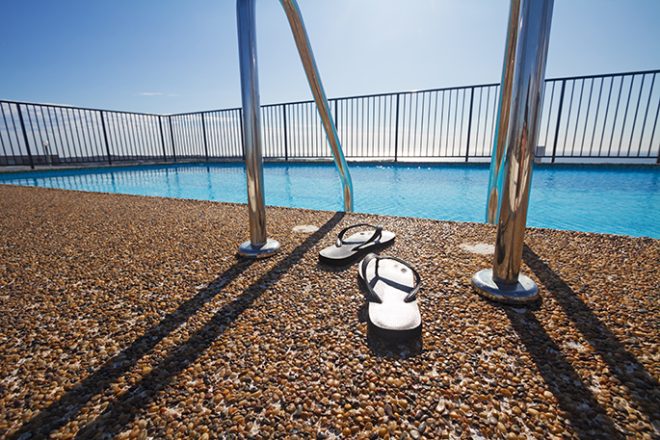Get ready for summer and ensure the safety of your loved ones around the pool. Tauranga City Council is reminding those with private pools to take all necessary safety measures for a worry-free summer.
A council spokesperson said, “Fencing your pool is a great way to prevent accidents. It’s crucial to stay cool, but safety should be the top priority.”
The council’s Pool Safety Compliance team is urging people to familiarize themselves with safety rules for both permanent and portable pools.
“As a pool owner, you’re responsible for maintaining all pool safety barriers on your property. This includes gates, doors, and windows that could lead directly to the pool area. If you’re thinking about getting a portable above-ground pool, popular in the summer, you need to plan for necessary safety measures.”
If the pool’s side walls are over 1.2m high, a safety barrier may not be needed.
“A portable pool with 1.2m high side walls that can’t be climbed may not need a safety barrier. But if the pool can be reached by a portable ladder, make sure the ladder is removed and stored away when not in use,” says Denise Hyde, Tauranga City Council Building Compliance Team Leader.
“The ladder should be secured away from the pool or stored inside the pool so a small child cannot access it.”
If your portable pool has sides less than 1.2m high, you need to have a pool safety fence around it. Fencing your pool is crucial for safety, particularly for children who are at risk of drowning in an un-fenced pool.
Not having adequate barriers could violate the Building Act 2004, and could result in a $500 fine.
“Our pool safety compliance staff are available to provide advice specific to your pool and property. For practical installation or maintenance work, you may need to consult a local builder or pool safety barrier supplier/installer,” says Denise.
If you plan to fill your pool this summer, check the Water Watchers Plan first for guidelines. Pools that require more than 300 litres will need an approved Smart Water Plan from December 2023 to February 2024.
Applying for a plan is free and helps manage Tauranga’s water supply.
To apply for a Smart Water Plan, visit www.tauranga.govt.nz/smart-water-plan-application.
For more information about swimming pool safety barriers, visit the Tauranga City Council website.




























































